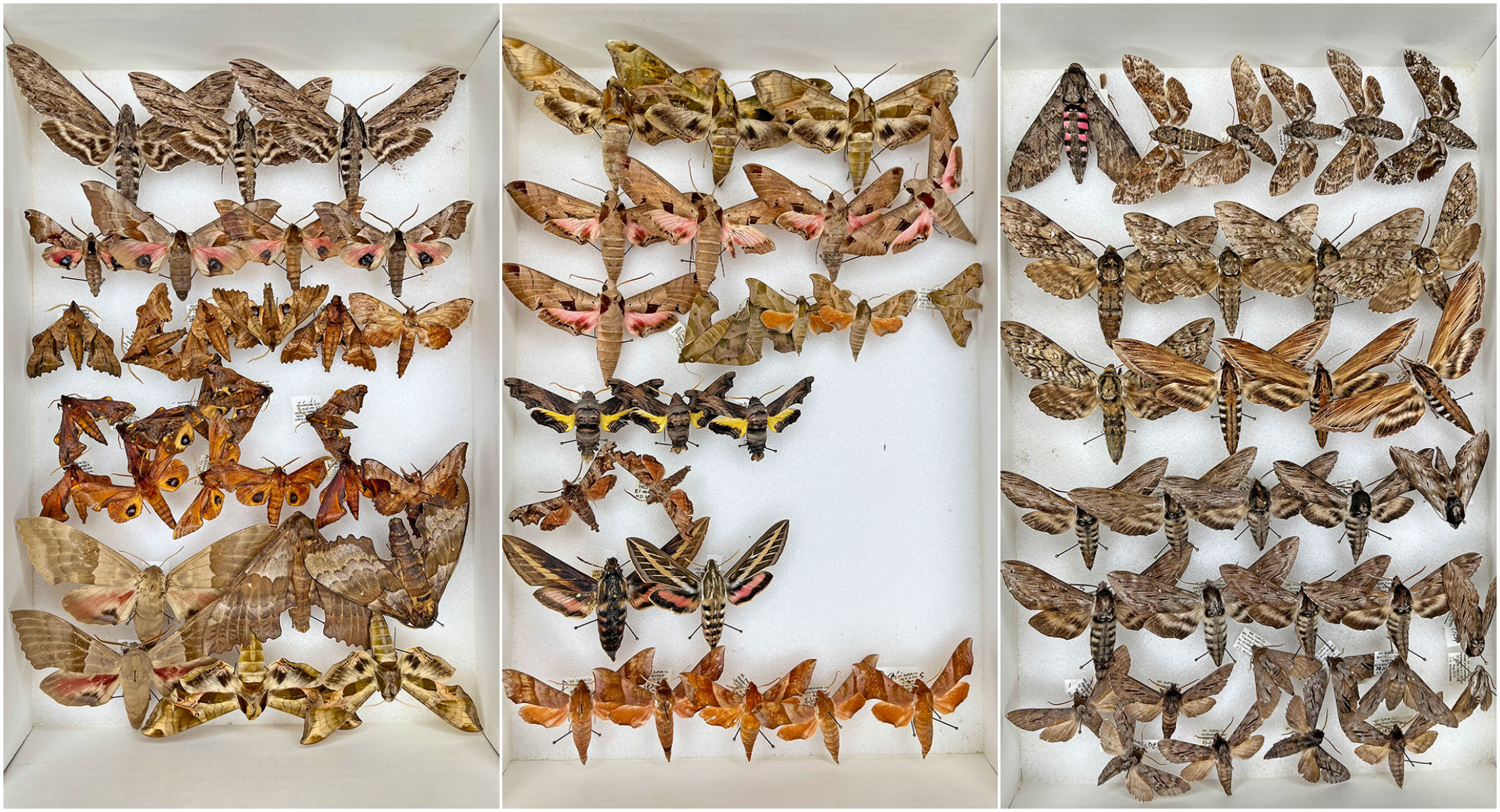
Nearly 100 Participants
Special thanks from Hugh D McGuinness from Washington, DC, for his collection
After you capture the hawkmoth, put it in the freezer. That procedure euthanizes the animal in a humane way by decreasing its metabolism slowly.
Leave it a day in the freezer, and then take it out to thaw at room temperature for about 20 minutes.
After it has thawed, carefully fold the wings over the back of the moth. Please ensure that the appendages are not broken off and that the wing pattern is not damaged by removing too many scales. Now, put the dried hawkmoth in any envelope - their bodies must go in first!
You can use any box you want, just remember to pad the inside of the box with tons of paper. That will cushion the dry hawkmoth and get it safely to us!

Alexandre Varaschin Palaoro
avarasc@clemson.edu
161 Sirrine Hall
Department of Materials Sciences and Engineering
After contacting us, you will receive an account number and free FedEx shipping instructions.
We discovered that butterflies and moths purposely make bubble trains, allowing them to feed on various available food sources.
Among the most popular insects are the hawk moths, well known for their remarkably long proboscises and ability to feed from flowers with extraordinarily long nectar tubes containing nectar of variable viscosity, from watery to sticky. To understand the wide-ranging abilities of these moths to acquire fluid from long and short nectar tubes, a diverse team of researchers will investigate the structure, function, and biomechanics of the proboscis and its associated sucking pump. The team will focus on how wettability of the proboscis and it ability to take up fluid enable the many species of hawk moths to feed on a wide range of liquid resources and from flowers with different nectar-tube lengths. VIEW PROJECT DETAILS >>